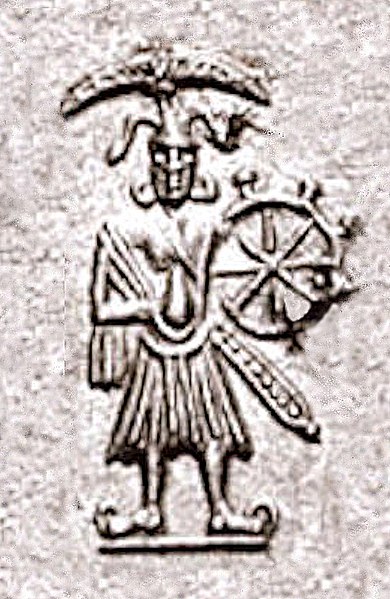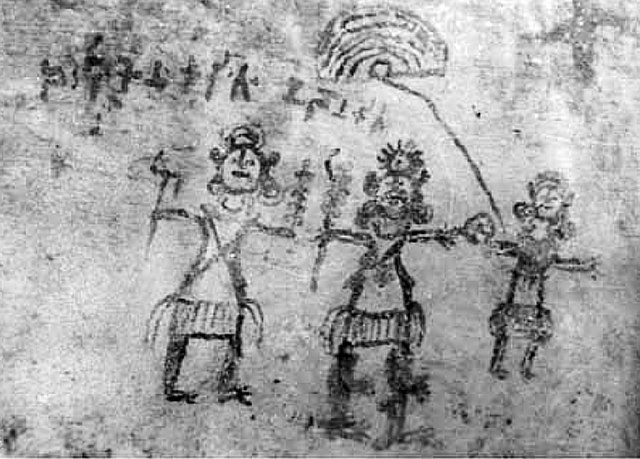Vāsudeva, later incorporated as Vāsudeva-Krishna, Krishna-Vāsudeva or simply Krishna, was the son of Vasudeva Anakadundubhi, king of the Vrishnis in the region of Mathura. He was a leading member of the Vrishni heroes, and may well have been an historical ruler in the region of Mathura.
Vāsudeva on a coin of Agathocles of Bactria, circa 190–180 BCE. This is "the earliest unambiguous image" of the deity.
Samkarshana, Vāsudeva and the female Goddess Ekanamsha shown in a rock painting at Tikla, 3rd–2nd century BCE
Coin of Agathocles of Bactria (190–180 BCE), with Samkarsana on the obverse and Vāsudeva on the reverse
The name Vāsudevā (𑀯𑀸𑀲𑀼𑀤𑁂𑀯𑀸) in the Brahmi script, in the Ghosundi inscription, 1st century BCE
Krishna is a major deity in Hinduism. He is worshipped as the eighth avatar of Vishnu and also as the Supreme God in his own right. He is the god of protection, compassion, tenderness, and love; and is widely revered among Hindu divinities. Krishna's birthday is celebrated every year by Hindus on Krishna Janmashtami according to the lunisolar Hindu calendar, which falls in late August or early September of the Gregorian calendar.
Statue of Krishna at Sri Mariamman Temple, Singapore
Vāsudeva-Krishna, on a coin of Agathocles of Bactria, c. 180 BCE. This is "the earliest unambiguous image" of the deity.
Heliodorus Pillar in the Indian state of Madhya Pradesh, erected about 120 BCE. The inscription states that Heliodorus is a Bhagvatena, and a couplet in the inscription closely paraphrases a Sanskrit verse from the Mahabharata.
Balarama and Krishna with their attributes at Chilas. The Kharoshthi inscription nearby reads Rama [kri]ṣa. 1st century CE.








![Balarama and Krishna with their attributes at Chilas. The Kharoshthi inscription nearby reads Rama [kri]ṣa. 1st century CE.](https://upload.wikimedia.org/wikipedia/commons/thumb/5/52/Rama_Krishna_at_Chilas.jpg/640px-Rama_Krishna_at_Chilas.jpg)